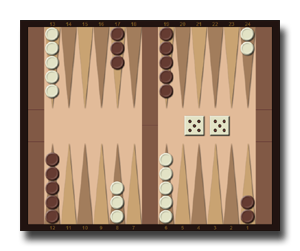Fianchetto question Friends,
please have a look at the following opening:
1.e4 d6 2.d4 Nf6 3.Nc3 g6 4.Bg5 Bg7 5.Qd2
This is Pirc but I suppose the subject may also arise in King's Indian.
How should black deal with the possibility of a white Bh6?
a) before it happens
b) after it happens...
b1) with a black O-O
b2) with a black O-O-O
Thanks in advance for your ideas and thoughts!
Sincerely yours,
Bernhard
More: Chess Openings Database
Hmmm... How about advancing the h-pawn (5. ... h6) putting the question to the Bishop and securing the h-file with the Rook?... It seems to me castling Kingside would be slightly premature... But I would latter castle Kingside after the fianchetto...
Bro...
More: Chess Tournaments
What you do all depends on how badly you want to retain the g7-bishop. You can retain the bishop with 5... h6 but then it can be extremely risky to play ...O-O with the pawn sticking out in that fashion, especially if White plays 6. Bf4 rather than 6. Bh4. This setup is still playable, though, even with the Black king stuck in the center, and there are some cases where ...h6 and a later ...O-O can be played (mostly situations where White castles queenside and is either a bit slow in getting his kingside play going or opts for central play instead).
Alternatively, you can simply ignore the "threat", since neither side is sufficiently developed for a bishop exchange to prove useful to White right away. Instead, Black can get on with typical Pirc counterplay with 5... c6, intending ...b5. If White insists on exchanging bishops right away after 5... c6 6. Bh6, then 6... O-O 7. Bxg7 Kxg7 when Black's queenside play is outpacing White's kingside play. Then, White likely has to abandon his kingside attempts and just opt for the more modest kingside castling.
Queenside castling usually doesn't work in the Pirc, both because it takes far too long and because the queenside is usually where Black's counterplay occurs.
More: Chess Rules
Queen side castling is a plausible option for black in most anti-pirc Be3 or Bg5 setups but that would usually happen when black delays Bg7 in favour of c6 b5 and intends to reply coming Bh6 with Bxh6. Black counts on the fact that white will lose time to relocate the queen from poor h6 post. In cases where Bg7 is already played the tempi loss for it is too much.
after h6 bf4 black can decoy with g5 but those lines one must know very well to stand a chance. to admit black has a bundle of candidate moves in place of that for sure.
More: Chess Friends
An aside ! Seeing you mention fianchetto's reminds me of a very amusing way to win 1 minute chess games.
Players normally hammer out their openings very quickly, so, when the opening is 1.d4 g6 it is sometimes worth playing 2.Bh6 !! as most times Black will already have been in the act of keying in Bg7, hence you pick up the B and R for nothing !!
Sorry if I have digressed !
Kind regards,
Cal
More: Play Chess Online
Anything else? Has anybody any more idea? Any literature to recommend?
Thanks in advance!
Yours,
Bernhard "brulla"
More: Chess Traps
Playing h6 and g5 in responce to white's opening moves is possible, but very risky, and you have to know very well what you are doing.
This is considered a "book line" :
1. e4 d6
2. d4 Nf6
3. Nc3 g6
4. Bg5 Bg7
5. Qd2 h6
6. Bh4 g5
7. Bg3 Nh5
As you can see, black goes all out for the white bishop, but weakens his kingside significantly. If you want something less trenchant, you'll probably have to allow the exchange of Bg7 - but as caldazar pointed out, it's not particularly bad.
More: Ultimate Chess
PS: here's a game between two Grandmasters:
1. e4 d6
2. d4 Nf6
3. Nc3 g6
4. Bg5 Bg7
5. Qd2 h6
6. Bh4 g5
7. Bg3 Nh5
8. O-O-O Nd7
9. f3 Nxg3
10. hxg3 c5
11. dxc5 Nxc5
12. Bb5+ Kf8
13. Nge2 Qa5
14. Nd4 a6
15. Be2 Bd7
16. Kb1 Rc8
17. Nd5 Qxd2
18. Rxd2 Be5
19. Nb6 Rc7
20. Nd5 Rc8
21. Nb6 Rc7
Draw agreed
(Nevednichy - Marin 1999)
More: Chess Lessons
